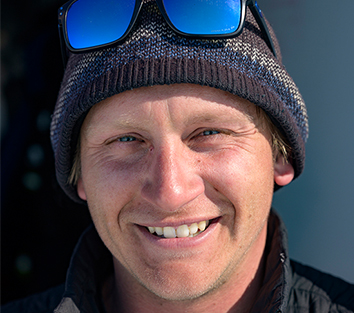White Desert’s cross-continental journey to Antarctica
First entry into Antarctica
Anyone working in Antarctica will find themselves developing a special relationship with this region. No matter the challenges encountered, the sheer scale and power of this remote continent easily eclipses the harder days. I have yet to visit anywhere else on Earth that makes me feel as connected to the wilderness, and myself.

Our journey to the Continent starts in October
A small team makes the cross continental journey at least a month before our season officially opens to White Desert guests and the full staff contingent.

Flight map showing our Basler flight from Canada to Antarctica via South America.
The only way to access the continent at the start of season is by ski-equipped plane. The range of these planes is much shorter than the jets we fly from Cape Town, which means the only way we can get to Wolf’s Fang Runway is from South America. The journey begins in Canada (where the planes are based in our off-season), with a 3-man crew making the 5-day – sometimes turbulent – journey down south to Punta Arenas. Here, at the tip of the South American continent, the crew are met by 3 additional technical staff critical to the re-opening of Wolf’s Fang Runway (WFR).
Departing from Punta, it’s then a ±4-hour flight over the notorious Drake Passage on to Rothera Research Station situated on the Antarctic peninsula. At Rothera, the aircraft switches to wheel skis readying the aircraft for landing on snow ski ways.
Our next leg is an ±8-hr flight to Neumayer Station, Atka Bay. On arrival, we are met by the German AWI (Alfred Wegener Institute) overwintering team. After 8 months of isolation, we are met with much excitement and chatter from the research team. After a re-fuel at Neumayer, we set off on the final leg of our journey to WFR.
Arrival at Wolf’s Fang Runway
In the final approach of WFR, there is a build-up of nervous anticipation as we lay eyes on the area for the first time in 7 months. The hope is that everything is as we left it the season before.
The crew will circle several times to assess their landing, as there is no one on the ground to provide support – a daunting feat and one that requires a seasoned pilot.

After landing, the air crew have accomplished their mission, and now it’s up to the White Desert Operations team to build a runway for an A340 to land.
Time is now against us as we work around the clock to establish infrastructure, start machines and then head onto the blue ice to begin the runway prep. The job at hand is tremendous and the conditions are tough to say the least but the reward at the end is unexplainable.
Watching the first A340 in Antarctica on a runway you have helped prepare is like no other feeling I have ever felt. Antarctica is a master at delivering moments like these.
